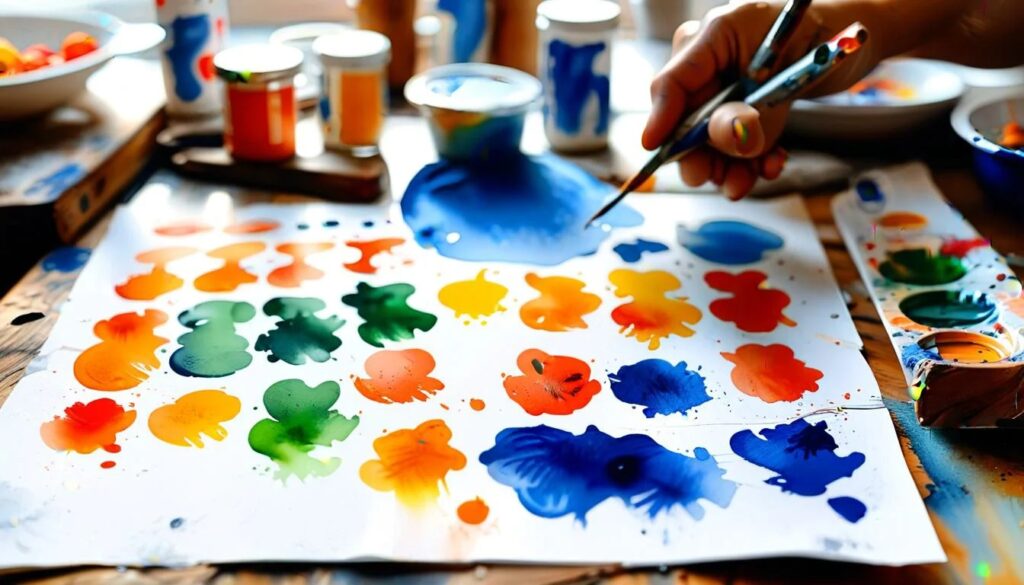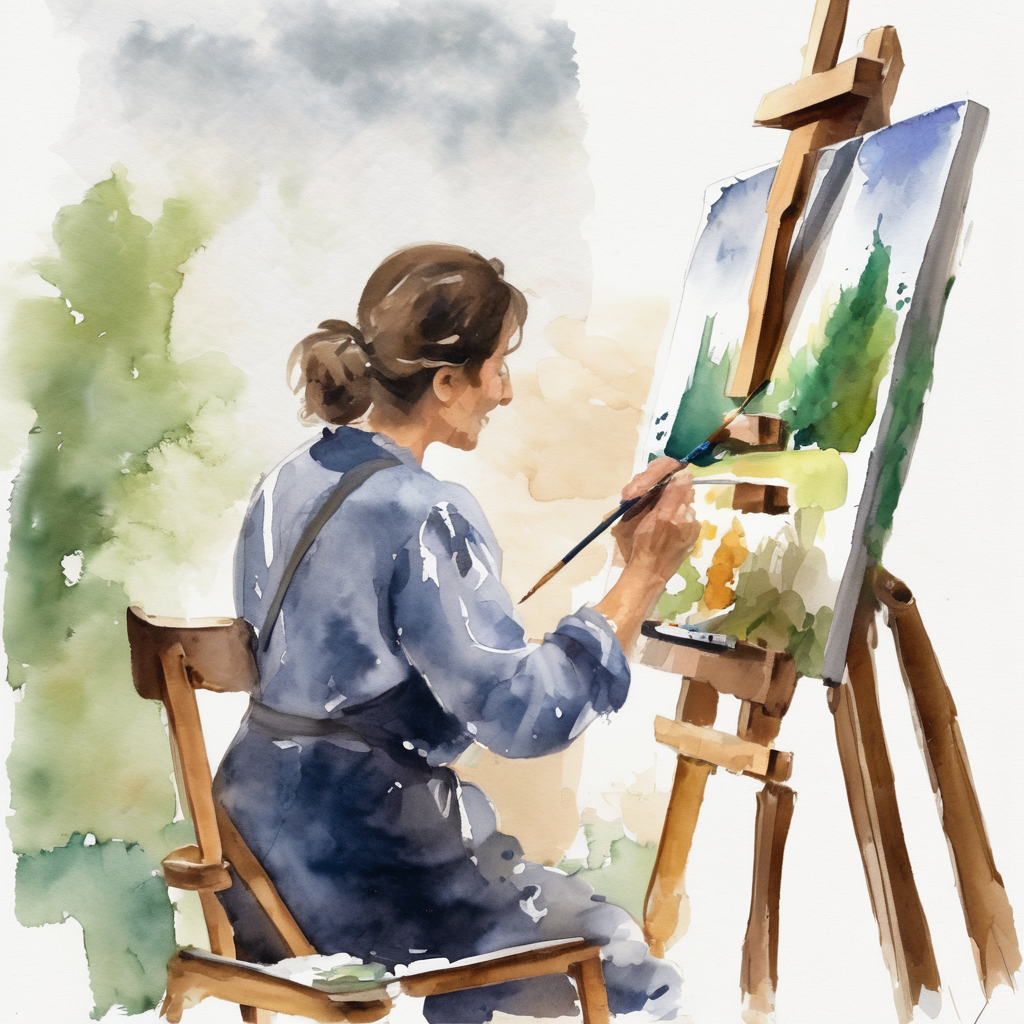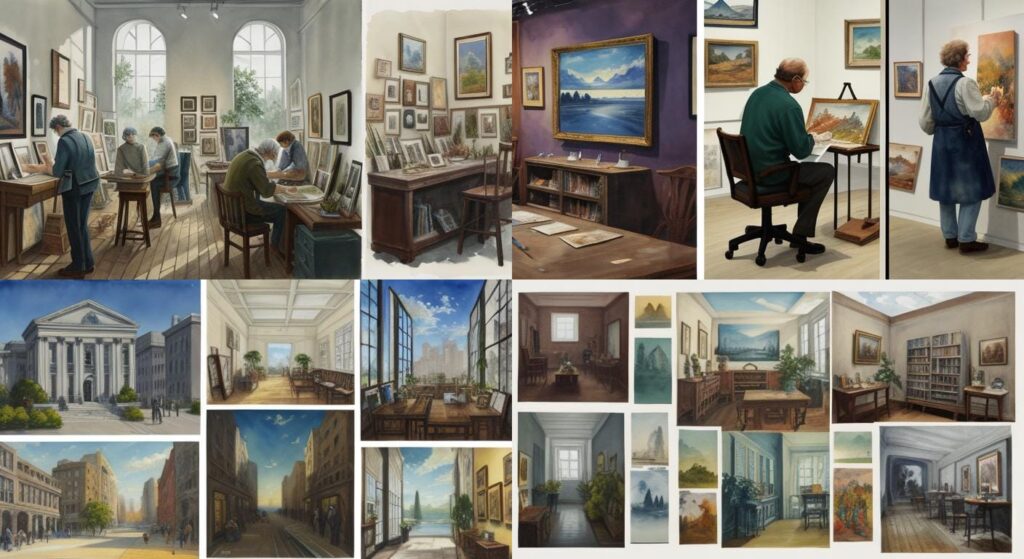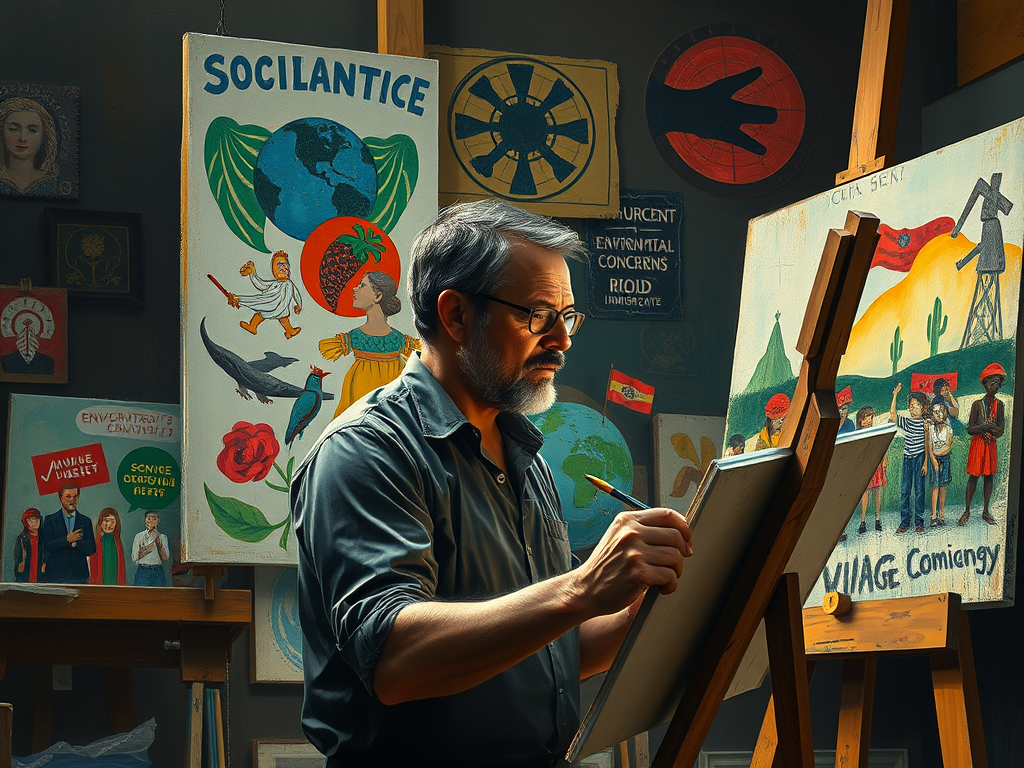Are you eager to explore the world of painting but unsure where to start? You’re not alone! This comprehensive guide will introduce you to painting, covering its rich history, diverse styles, and the essential tools you need to begin your artistic journey.
Listen to our Podcast on Introduction to Painting
The History of Painting
Painting is a timeless art form that has evolved over millennia. From ancient cave paintings to modern masterpieces, painting reflects the history and cultures of civilizations around the world.
Prehistoric to Ancient Times
Prehistoric Art
The earliest paintings date back to prehistoric times, with cave paintings in regions like France and Spain. These artworks depict the lives of early humans, showcasing their connection to nature and their surroundings.
Ancient Egypt
Ancient Egyptian art is renowned for its vibrant frescoes found in tombs. These paintings illustrated religious beliefs and daily life, leaving a colorful legacy that continues to captivate art enthusiasts.
Classical Antiquity
Ancient Greece and Rome
Greek vase painting and Roman frescoes played significant roles in classical art. These works often portrayed scenes from mythology and everyday life, offering insight into ancient cultures.
Medieval to Renaissance
Byzantine and Gothic Art
The Medieval period introduced Byzantine art, focusing on religious themes and intricate mosaics. Gothic art followed, known for its stunning stained glass windows that illuminated cathedrals with vibrant colors.
The Renaissance
The Renaissance marked a pivotal moment in art history. Artists like Leonardo da Vinci, Michelangelo, and Raphael redefined painting with their focus on realism, human anatomy, and perspective. Masterpieces like “The Mona Lisa” and “The Last Supper” emerged during this era.
Baroque to Modernism
Baroque
The Baroque era was characterized by dramatic lighting and movement. Artists such as Caravaggio and Rembrandt used chiaroscuro to create striking contrasts, leaving a lasting impact on the art world.
Rococo and Romanticism
The 18th century saw the rise of Rococo, known for its playful themes and intricate details. Romanticism followed, emphasizing emotion and the sublime, with artists exploring the power of nature and the human spirit.
Impressionism and Post-Impressionism
Impressionism revolutionized art by capturing light and movement. Pioneers like Claude Monet and Pierre-Auguste Renoir focused on fleeting moments, while Post-Impressionists like Vincent van Gogh and Georges Seurat explored individual expression and innovative techniques.
20th Century to Contemporary
Modern Movements
The 20th century brought a wave of new artistic movements. Expressionism, led by Edvard Munch, conveyed raw emotions through intense colors. Cubism, pioneered by Pablo Picasso, broke down objects into geometric forms, challenging traditional perspectives.
Surrealism delved into the subconscious, with Salvador Dalí creating dreamlike scenes. Abstract Expressionism, championed by Jackson Pollock, emphasized spontaneous gestures and emotions.
Pop Art and Beyond
Pop Art emerged in the 1950s, drawing from popular culture to challenge traditional art boundaries. Icons like Andy Warhol and Roy Lichtenstein used vibrant colors and bold compositions. Contemporary art continues to evolve, exploring diverse styles and mediums.
Understanding Painting Styles
Now that we’ve explored the history of painting, let’s delve into key styles and the artists who shaped them.
Renaissance
The Renaissance was a period of artistic and cultural revival, characterized by a renewed interest in classical art and human anatomy. Leonardo da Vinci, Michelangelo, and Raphael are renowned Renaissance artists whose works embody the era’s ideals.
Baroque
Baroque art is marked by dramatic lighting and grand scale. Caravaggio, known for his chiaroscuro technique, and Rembrandt, celebrated for his mastery of light, are key figures in this movement.
Impressionism
Impressionism focused on capturing the fleeting effects of light and movement. Artists like Claude Monet and Edgar Degas are notable for their innovative approaches, creating iconic works such as “Impression, Sunrise.”
Post-Impressionism
Post-Impressionists explored individual expression and new ways of portraying reality. Vincent van Gogh and Paul Gauguin are central figures, known for their unique styles and techniques.
Expressionism
Expressionism emphasized raw emotions and intense colors. Artists like Edvard Munch used distorted forms to convey psychological states, with works such as “The Scream” becoming emblematic of the movement.
Cubism
Cubism challenged the traditional representation of reality by breaking down objects into geometric forms. Pioneers Pablo Picasso and Georges Braque revolutionized art with pieces like “Les Demoiselles d’Avignon.”
Surrealism
Surrealism explored the subconscious and dreams. Salvador Dalí and René Magritte created fantastical scenes that delved into the irrational and strange.
Abstract Expressionism
Abstract Expressionism emphasized spontaneous gestures and emotions. Artists like Jackson Pollock and Mark Rothko used abstract forms and colors to convey deep feelings.
Pop Art
Pop Art borrowed imagery from popular culture, using vibrant colors and bold compositions. Andy Warhol’s “Campbell’s Soup Cans” and Roy Lichtenstein’s “Whaam!” are iconic examples.
Essential Painting Tools and Techniques
Ready to start your painting journey? Let’s explore the basic tools and techniques you’ll need.

Paints
Read more on painting materials
- Oil Paints: Known for their rich colors and versatility, oil paints have a slow drying time, allowing for detailed work.
- Acrylic Paints: Fast-drying and water-based, acrylic paints are easy to use and ideal for beginners.
- Watercolor Paints: These paints are water-soluble and perfect for creating delicate washes.
- Tempera Paints: Made from egg yolk and pigments, tempera paints offer a matte finish and durability.
- Gouache: Opaque watercolors that provide greater control over color intensity.
Paintbrushes
- Size: Choose brushes in various sizes to create strokes ranging from fine details to broad washes.
- Shape: Common shapes include round, flat, fan, and filbert brushes.
- Material: Brushes can be made from natural hair (sable, badger) or synthetic bristles.
Other Essential Painting Tools
- Palette: A surface for mixing paints, available in various materials.
- Canvas: The traditional surface for painting, offering durability and texture.
- Easel: A stand to hold your canvas, providing stability and comfort.
- Palette Knife: Used for mixing paint and applying thick layers.
- Masking Tape: Helps create sharp edges or protect areas of your canvas.
Painting Techniques
Read more on Painting Techniques
- Layering: Applying thin coats of paint on top of each other to create depth and richness.
- Blending: Smoothing out paint edges to create soft transitions and gradients.
- Glazing: Applying a thin coat of transparent paint over dry layers to add subtle color variations.
- Dry Brushing: Using a brush with minimal paint to create texture and highlights.
Embark on your creative journey with this introduction to painting, and discover the joy and fulfillment of expressing yourself through art!
Study Guide
Want to understand and learn more – download our study guide below.
Explore the rich history of painting from prehistoric times to contemporary art. Understand key styles like Renaissance, Impressionism, and Surrealism. Learn about essential tools such as paints, brushes, and canvases. Discover techniques like layering and blending to enhance your artistic journey.



